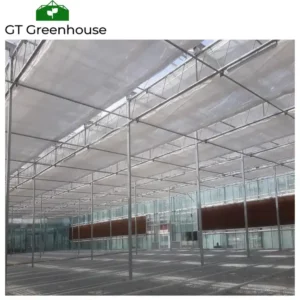Introduction
Plastic greenhouses have revolutionized modern agriculture by providing an efficient and controlled environment for plant cultivation. These structures, often referred to as polytunnels or high tunnels, are composed of various materials specifically chosen for their durability, light transmission, and thermal properties. In this article, we will explore the composition of a plastic greenhouse, highlighting the materials involved and the benefits they bring to sustainable crop production.
Framework and Structural Components
- Galvanized Steel:
The framework of a plastic greenhouse is typically constructed using galvanized steel. This material offers excellent strength, corrosion resistance, and durability, ensuring the structural integrity of the greenhouse. Galvanized steel also provides stability against wind and snow loads, making it suitable for various climatic conditions. - Aluminum:
Aluminum components are sometimes used in greenhouse structures due to their lightweight nature and resistance to corrosion. Aluminum is particularly favored in areas with high humidity or near coastal regions, where the risk of corrosion is higher. - PVC (Polyvinyl Chloride) Pipes:
PVC pipes are commonly used for the framework of smaller or low-cost plastic greenhouses. They are lightweight, affordable, and easy to assemble. However, PVC is less durable than steel or aluminum and may require additional reinforcement in regions with extreme weather conditions.
Covering Materials
- Polyethylene (PE):
Polyethylene is the most prevalent material used for the greenhouse covering. It is a type of plastic that offers excellent light transmission, durability, and cost-effectiveness. Polyethylene films come in various thicknesses, with the choice depending on the specific requirements of the crops being grown and the prevailing climate. - Polyvinyl Chloride (PVC):
PVC films are another option for greenhouse coverings. They have good light transmission properties and provide insulation against heat loss. However, PVC films are less commonly used due to their environmental impact and potential health concerns associated with the release of hazardous chemicals during production and disposal. - Polypropylene (PP):
Polypropylene films are gaining popularity as an alternative to polyethylene due to their higher resistance to ultraviolet (UV) radiation and longer lifespan. PP films offer good light transmission and thermal insulation properties while being more environmentally friendly. - Polycarbonate:
Polycarbonate panels are used in more advanced and commercial greenhouses. These panels provide excellent thermal insulation, impact resistance, and light diffusion. Polycarbonate has a longer lifespan compared to plastic films, making it a preferred choice for growers seeking durability and extended use.
Additional Components and Features
- Ventilation Systems:
Plastic greenhouses incorporate ventilation systems composed of materials like polyethylene or nylon for roll-up side walls or roof vents. These systems allow growers to regulate temperature, humidity, and airflow within the greenhouse, ensuring optimal growing conditions. - Door Frames and Fasteners:
Door frames are typically made of steel or aluminum to provide stability and durability. Fasteners such as clips, brackets, and screws are used to secure the covering materials to the framework and ensure a tight fit.
Benefits of Plastic Greenhouse Composition
- Light Transmission:
The composition of plastic greenhouses allows for efficient light transmission, enabling plants to receive the necessary sunlight for growth and photosynthesis. The covering materials are designed to allow the appropriate spectrum of light to pass through while minimizing the loss of energy. - Thermal Insulation:
The materials used in plastic greenhouses offer thermal insulation properties, allowing growers to maintain suitable temperatures for plant growth. This insulation helps protect plants from extreme temperature fluctuations, frost, and cold drafts. - Durability and Longevity:
The combination of galvanized steel, aluminum, and durable plastic films or panels ensures the longevity and structural integrity of a plastic greenhouse. These materials are designed to withstand harsh weather conditions, UV radiation, and physical impacts, providing a long-lasting cultivation environment. - Cost-Effectiveness:
Plastic greenhouses, with their composition of affordable materials, offer a cost-effective solution for crop production. The use of polyethylene films, in particular, contributes to lower construction and maintenance costs, making greenhouse cultivation accessible to a wider range of growers. - Environmental Considerations:
The composition of plastic greenhouses allows for environmentally conscious choices. Opting for materials with low environmental impact, such as polypropylene or polycarbonate, reduces the ecological footprint associated with greenhouse production and disposal.
Conclusion
The composition of a plastic greenhouse involves a careful selection of materials that provide strength, durability, light transmission, and thermal insulation. From galvanized steel frames to polyethylene films or advanced polycarbonate panels, these components work together to create a controlled environment for plant cultivation. Plastic greenhouses offer numerous benefits, including improved light transmission, thermal insulation, durability, cost-effectiveness, and the potential for sustainable and efficient crop production. By harnessing the power of innovation in greenhouse construction, growers can optimize their yields, extend their growing seasons, and contribute to a more sustainablefuture of agriculture.
